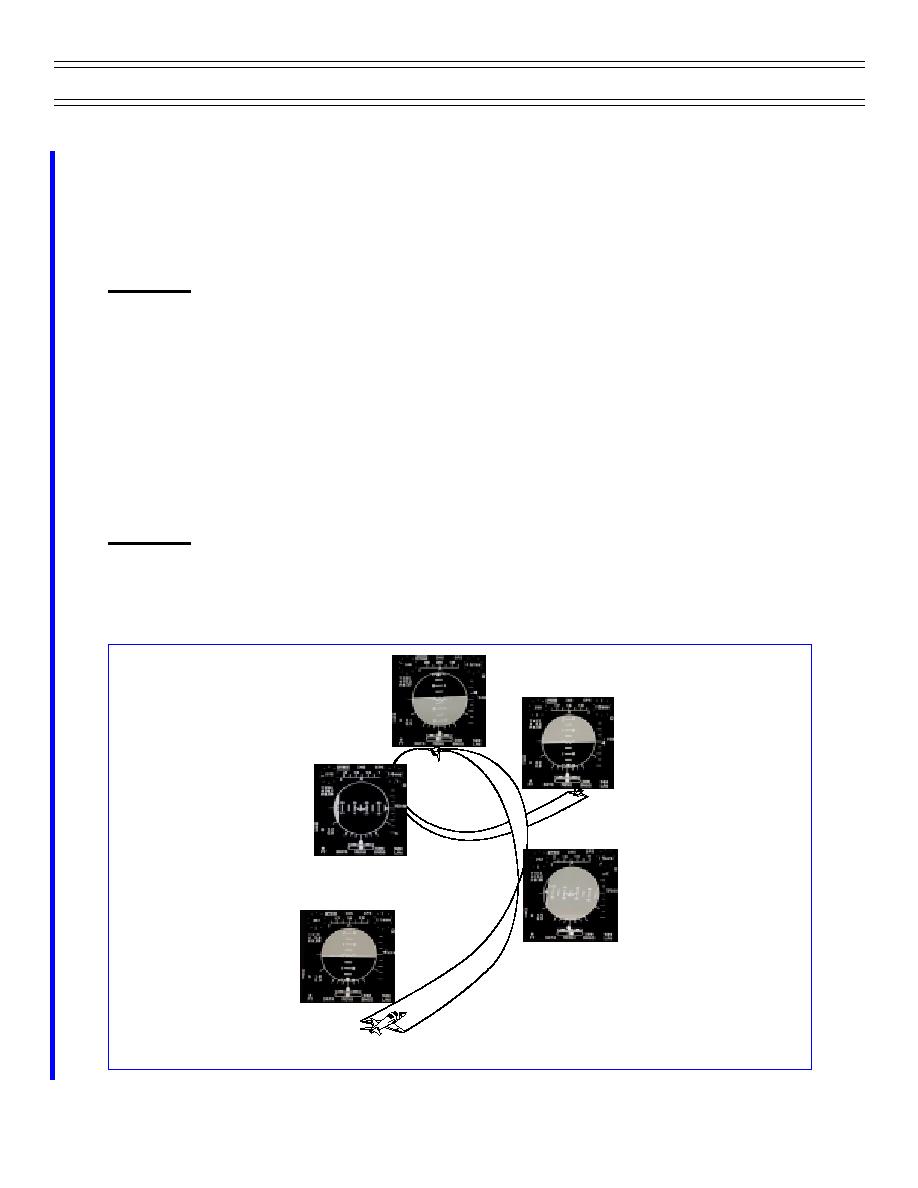
Constant Airspeed Climbs and Descents
Instrument Flight
BARREL ROLL
In the barrel roll, you roll the aircraft 360 degrees about an imaginary point on the horizon that bears
45 degrees from the original heading of the aircraft. You practice it to further develop your confidence,
coordination, and instrument scan while flying the aircraft through varying attitudes and airspeeds. The
barrel roll also develops your ability to remain oriented while flying the aircraft in balanced flight through
the inverted position (Figure 10c).
Procedures
Complete the prestall and aerobatic checklist prior to performing the barrel roll. Begin the maneuver at
350 KIAS, on altitude, with the power set at approximately 92 percent rpm, and on a reference heading.
Smoothly bring the nose to approximately 20 degrees nose-high attitude while maintaining wings level.
Passing 20 degrees nose up, initiate a smooth roll in the direction of the maneuver while scribing an arc
around an imaginary 45-degree reference point. The nose will be at its highest when the aircraft is in
90 degrees AOB passing through 45 degrees of turn.
Continue at a constant rate of roll so that the aircraft is inverted wings level and 90 degrees off the original
heading as the nose passes down through the horizon. Verify that your airspeed over the top is
approximately 170-190 KIAS. Continue the roll so that the nose passes through the 45-degree nose down
position below the imaginary 45-degree reference point with a 90-degree AOB. Maintain constant nose
movement and roll to exit the barrel roll at 350 KIAS at entry altitude and on entry heading.
Techniques
As in the wingover, you will have to adjust your control inputs to maintain a constant rate of roll and pitch
as the airspeed changes during the maneuver. If you are not achieving 90 degrees of heading change as
you roll inverted, you didn’t maintain enough back stick when you were between 60 and 90 degrees AOB.
Figure 10c: BARREL ROLL
Page 40
(4-01) Original


 Previous Page
Previous Page
